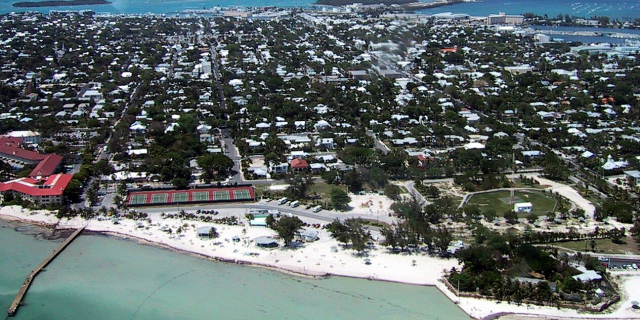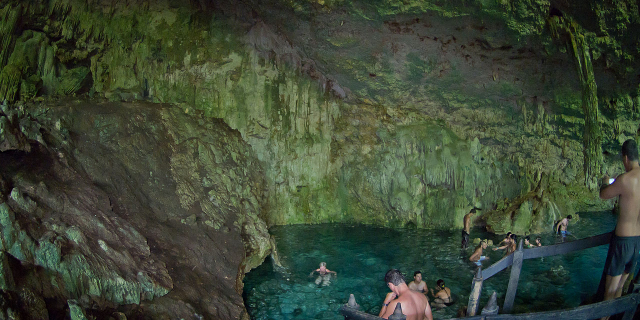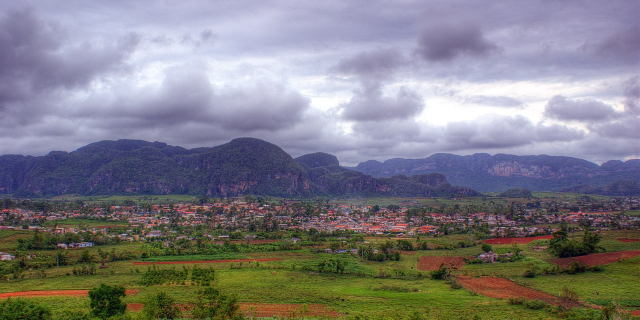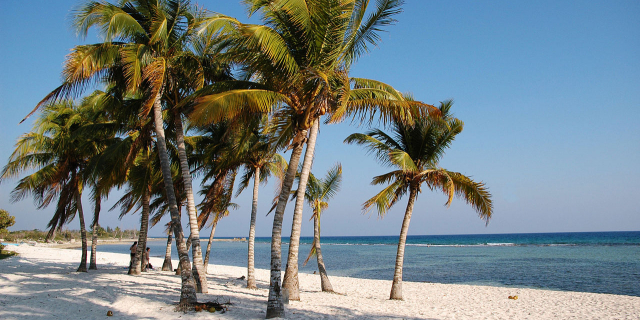Dry Tortugas National Park is an American national park located about 68 miles (109 km) west of Key West in the Gulf of Mexico, in the United States. The park preserves Fort Jefferson and the several Dry Tortugas islands, the westernmost and most isolated of the Florida Keys. The archipelago's coral reefs are the least disturbed of the Florida Keys reefs.
The park is noted for abundant sea life, tropical bird breeding grounds, colorful coral reefs, and shipwrecks and sunken treasures. The park's centerpiece is Fort Jefferson, a massive but unfinished coastal fortress. Fort Jefferson is the largest brick masonry structure in the Western Hemisphere, composed of more than 16 million bricks. Dry Tortugas is unique in its combination of a largely undisturbed tropical ecosystem with significant historic artifacts. The park is accessible only by seaplane or boat and has averaged about 63...Read more
Dry Tortugas National Park is an American national park located about 68 miles (109 km) west of Key West in the Gulf of Mexico, in the United States. The park preserves Fort Jefferson and the several Dry Tortugas islands, the westernmost and most isolated of the Florida Keys. The archipelago's coral reefs are the least disturbed of the Florida Keys reefs.
The park is noted for abundant sea life, tropical bird breeding grounds, colorful coral reefs, and shipwrecks and sunken treasures. The park's centerpiece is Fort Jefferson, a massive but unfinished coastal fortress. Fort Jefferson is the largest brick masonry structure in the Western Hemisphere, composed of more than 16 million bricks. Dry Tortugas is unique in its combination of a largely undisturbed tropical ecosystem with significant historic artifacts. The park is accessible only by seaplane or boat and has averaged about 63,000 visitors annually in the period from 2008 to 2017. Activities include snorkeling, picnicking, birdwatching, camping, scuba diving, saltwater fishing and kayaking. Overnight camping is limited to eight primitive campsites at the Garden Key campground, located just south of Fort Jefferson.
Dry Tortugas National Park is part of the Everglades & Dry Tortugas Biosphere Reserve, established by UNESCO in 1976 under its Man and the Biosphere Programme.
The first European to see the Dry Tortugas was Juan Ponce de León, who visited on June 21, 1513. Ponce de León caught 160 sea turtles there and subsequently referred to the islands as the "Tortugas" (turtles). They are called Dry owing to the absence of surface fresh water on the island.[1] The name is the second oldest surviving European place-name in the US.[2]
The archipelago includes a high concentration of historically significant shipwrecks dating from the 17th century to the present.[3] In 1742 HMS Tyger wrecked in the Dry Tortugas. The stranded crew lived on Garden Key for 56 days, and fought a battle with a Spanish sloop, before sailing to Jamaica in several boats.[4]
Florida was acquired from Spain by the United States in 1819. The Dry Tortugas were seen as a strategic point for the control of the Straits of Florida and the Gulf of Mexico. Work on a lighthouse on Garden Key started in 1825. In 1856 work on a new, more powerful lighthouse on Loggerhead Key was started to replace the Garden Key light.[5]
John James Audubon visited the Tortugas in 1832 and so did Louis Agassiz in 1858.[6]: 25
The Dry Tortugas are also rich in maritime history. In 1989 Seahawk Deep Ocean Technology explored a shipwreck believed to be part of the 1622 Spanish treasure fleet. The wreck located in 1,332 ft (406 m) of water, yielded olive jars, copper, gold, silver, glass and other cultural artifacts.[7] On September 6, 1622, the Nuestra Señora de Atocha was driven by a severe hurricane onto a coral reef near the Dry Tortugas, about 35 mi (56 km) west of Key West. Mel Fisher and his company discovered the wreck July 20, 1985. The estimated $450 million cache recovered, known as "The Atocha Motherlode," included 40 tons of gold and silver; there were some 114,000 of the Spanish silver coins known as pieces of eight, gold coins, Colombian emeralds, gold and silver artifacts, and 1,000 silver ingots.[8] In addition to the Atocha, Fisher's company, Salvors Inc., found remains of several nearby shipwrecks, including the Atocha's sister galleon the Santa Margarita, lost in the same year, and the remains of a slave ship known as the Henrietta Marie, lost in 1700.[9]
Fort Jefferson Brick archway in Fort Jefferson
Brick archway in Fort JeffersonFort Jefferson is a massive but unfinished coastal fortress. It is the largest masonry structure in the Western Hemisphere,[10][11] and is composed of more than 16 million bricks.
Planning for a fortification began almost immediately after American acquisition, and construction started in 1847.[12] Work was half complete in 1860. Workers consisted mostly of enslaved people hired from their owners in Key West and other parts of the State of Florida. Some White laborers, mostly Irish immigrants were also employed.[13] The use of enslaved labor was discontinued in 1863.[14] This bastion remained in Union hands throughout the Civil War. It later was used as a prison until abandoned in 1874.[5] Dr. Samuel Mudd, famous for being the doctor who treated John Wilkes Booth in the wake of the Lincoln assassination, was imprisoned here for conspiracy with three others until early 1869, when he was pardoned in 1869 after averting a viral outbreak.[15] Also imprisoned was a leader of the "Chicago Conspiracy", Englishman George St. Leger Grenfell, who is supposed to have drowned having escaped in a small boat.
During the 1880s, the Navy established a base in the Dry Tortugas, and it subsequently set up a coaling (refueling) and a wireless (radio) station there as well. During World War I, a seaplane base was established in the islands, but it was abandoned soon thereafter.
From 1903 until 1939 the Carnegie Institution of Washington operated the Marine Biology Laboratory on Loggerhead Key which "...quickly became the best-equipped marine biological station in the tropical world."[16] Through the years, over 150 researchers used the facilities to perform a wide range of research.[17] In June 1911 the laboratory built a vessel in Miami, Anton Dohrn, for use by researchers as well as logistics between the station and Key West.[18] The vessel, excepting a period of World War I service with the Navy, supported the laboratory's work until closure in 1939 and donation of Anton Dohrn to the Woods Hole Oceanographic Institution.[19]
An account of a visit to the fort at the Dry Tortugas by President Franklin D. Roosevelt and Justice-to-be Robert H. Jackson can be found in Jackson's book That Man: An Insider's Portrait of Franklin D. Roosevelt.
The African-American ExperienceFort Jefferson was home to African Americans not only as enslaved persons but also as Union Soldiers, freedmen and prisoners. Starting in 1847, the United States Army Corps of Engineers hired enslaved laborers. Between 1847 and 1860, approximately 17% of Key West's enslaved people were leased to the Corp as laborers.[20] The majority of the enslaved people working at Fort Jefferson were men, who were the base of the hard, unskilled workers. Some were also employed as domestic servants, boatmen and cooks. Enslaved women were also present. They did the wash and some cooking. After the Emancipation Proclamation, some freed African American men enlisted in the Union Army. The 82nd Colored Infantry was stationed at Fort Jefferson near the end of the Civil War. Between 1861 and 1871, there were African Americans held as military prisoners at the fort.[14]

































Add new comment